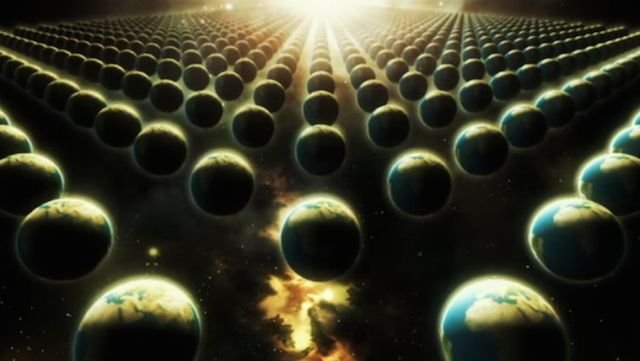Our universe exists within the fabric of space-time — 3D space combined with time, to create a 4D continuum, But scientists can't say for sure what space-time looks like, which means it might hold countless universes that are invisible to us.
The simplest version of the multiverse concept is the so-called mirror universe, in which a single alternate universe closely parallels ours, but is also its opposite — such as the "Mirror, Mirror" episode of the original "Star Trek" television series, in which a landing party mistakenly beams up to a different version of the Enterprise, occupied by more brutal versions of their familiar crewmates.
Another perspective on the multiverse is the brane universe, which describes our universe as one membrane in a vast, possibly infinite stack of membrane universes, but with no connection or means to communicate between them.
Multiple universes might also exist within contained bubbles of space-time, a concept explored in the video game "Bioshock Infinite." By this reckoning, inhabitants of two universes could theoretically interact should their "bubbles" connect to each other directly.
Quantum universes appear more commonly in sci-fi, This idea suggests that every decision a person makes spawns a new timeline, creating a new and self-contained universe that follows a different path. Science-fiction writers crafting time-travel stories frequently invoke the rules of quantum universes to explain how characters can travel to the past and not erase their own existence — their every choice births new universes entirely, leaving the universe that was their origin intact.
But perhaps the most disturbing premise of all is whether the universe we perceive as real is, in fact, a simulation of some kind, as in the movie "The Matrix."